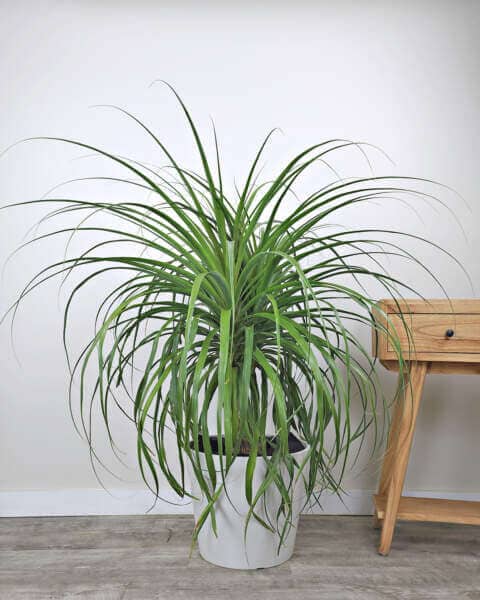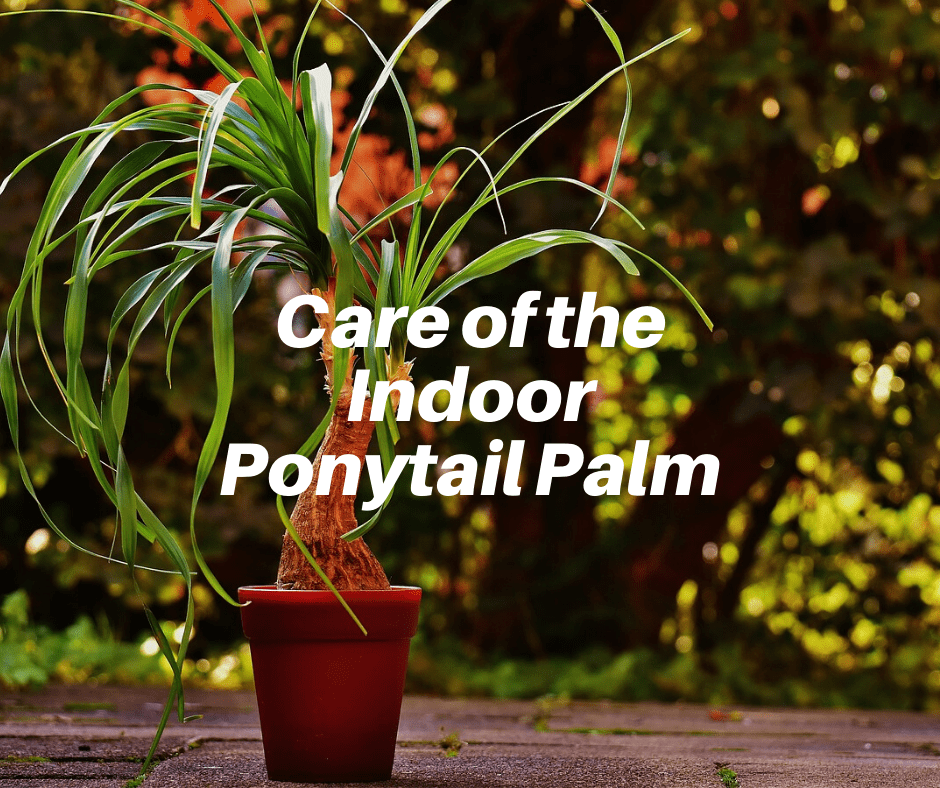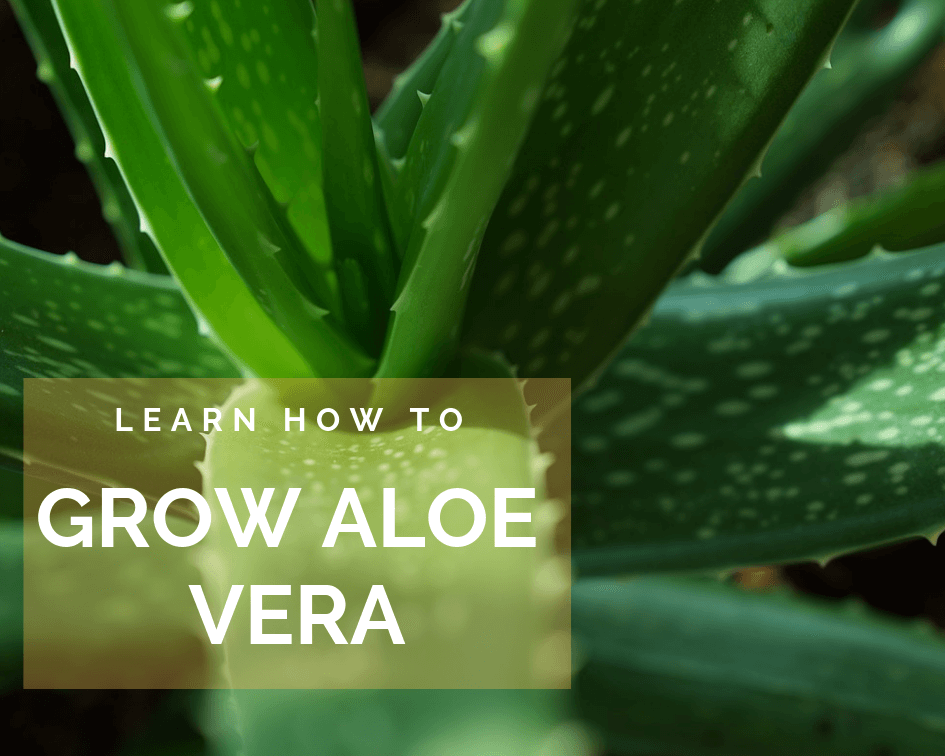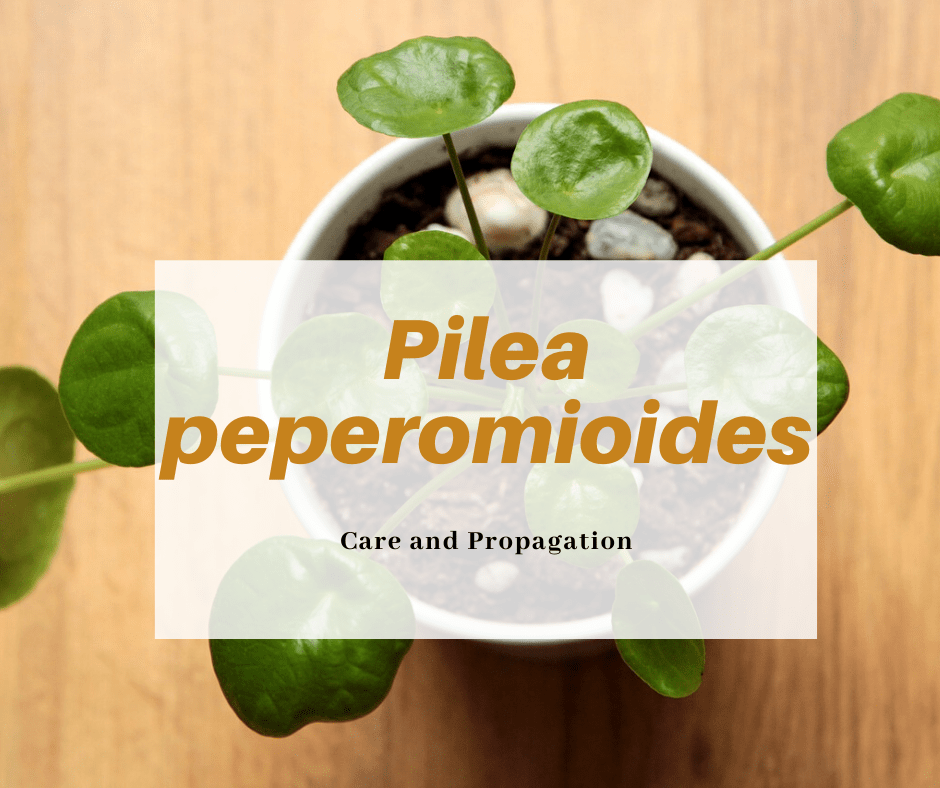This post may contain affiliate links. As an Amazon Associate we earn from qualifying purchases.
It is so easy to take care of a potted ponytail palm houseplant. You will LOVE it!
The ponytail palm (Beaucarnea recurvata Lem.), sometimes called the ponytail plant, isn’t really a palm. In fact, it is classified in the asparagus family (Asparagaceae).
Ponytail palms are native to Mexico and, outside of the warmer regions in the U.S., it is generally grown indoors in containers. It’s a slow grower and doesn’t ask for much as far as care is concerned. It’s the perfect plant for busy people who often forget or don’t have the time, to fuss over their plants.
Although in nature they may grow to 30 feet in height, grown indoors the ponytail palm may reach 6 to 8 feet tall.

What you need to grow a pony tail palm:
- Light and porous soil mix
- Houseplant fertilizer
- Insecticidal soap spray
Ponytail palm soil
Ponytail palms do best in free-draining soil, such as cactus mix. You can also use potting mix if you add chunky stuff, such as gravel or finely shredded bark; anything that will make the soil more porous.
Good drainage is crucial for the ponytail plant.
How often do you water a ponytail palm?
The ponytail palm is native to dry, arid regions so it isn’t real fond of lots of water. See that bulbous trunk? It’s full of water so you hovering over it with a watering can isn’t what this guy needs. In fact, it’s best to let the soil dry completely before watering it.
Grown indoors, under normal environmental conditions, you may find yourself watering the plant every three weeks during the growing season. Again, don’t water on a schedule. Let the soil tell you when it’s time to water.
In the winter, some growers withhold water completely. We water once, in mid-winter.

Symptoms of overwatering include browning tips on the leaves and, later, leaves dropping from the plant. If the plant looks wilted and the leaves curl, it needs water.
The best way to ensure a thorough watering, with evenly moist soil, is bottom watering. This is a process that allows the soil to wick up moisture from the bottom of the pot. It’s simple and very effective.
Where you plan on watering depends on the size of your ponytail palm. Small ones can be place in the sink. We put our jumbo guy in the bathtub. Whichever location you choose, put the ponytail palm in it and then fill the vessel with water until it comes halfway of the sides of the pot. Leave the pot to soak for a bit and remove it as soon as the top of the soil is wet.
Leave the potted ponytail palm in the sink or tub to drain completely. When you think it’s done draining, pick it up and tip the pot to one side. If water drips from the bottom, it hasn’t finished draining. That water is known as “perched water,” and to keep the ponytail palm from being overwatered, you need to get rid of it.
I just tip the pot over the sink’s drain and let it sit there, tipped slightly on it’s side, until it’s finished draining. You may need to use something to prop it up so that the pot isn’t laying on its side, but is tipped at about a 15 degree angle.
Does the ponytail palm like shade or sun?
The latter, please, and lots of it. This is one plant that won’t get all diva-ish if you set it near a window that provides full sun. Lacking that, provide at least bright light if you want the ponytail palm to look its best.
For a real treat, plan on taking the ponytail palm outdoors when the weather warms so that it can bathe in all that warmth and sunshine. Introduce it to the outdoors gradually by giving it an hour of sun for the first few days and then gradually introduce it to more sun over the course of two or three weeks.
Bring it back indoors when the night temperatures start to dip.
Fertilizer for the ponytail palm
Fertilize the ponytail plant in early spring with a 3:1:2 ratio fertilizer, at the rate suggested on the package. Some fertilizers with this ratio include:
Ponytail palm problems
Check the ponytail plant for common pests such as mealybug and use insecticidal soap spray for an infestation.
Move the plant to a shady area after treatment. When the infestation is under control, wipe the insecticidal soap from the foliage before placing the plant back in sunlight.
Resources




